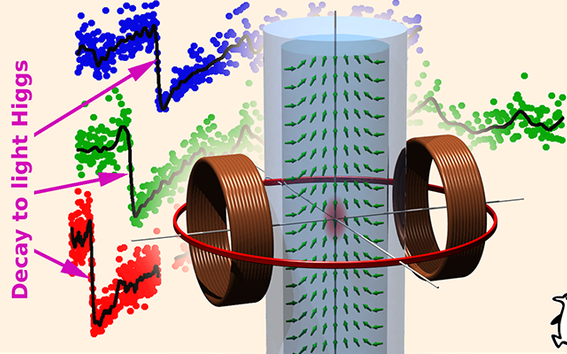More Higgs particles can be found by studying superfluid helium

In 2012, a proposed observation of the Higgs boson was reported at the Large Hadron Collider in CERN. The observation has puzzled the physics community, as the mass of the observed particle, 125 GeV, looks lighter than the expected energy scale, about 1 TeV.
Researchers at Aalto University in Finland now propose that there is more than one Higgs boson, and they are much heavier than the 2012 observation. The results were recently published in Nature Communications.
'Our recent ultra-low temperature experiments on superfluid helium (3He) suggest an explanation why the Higgs boson observed at CERN appears to be too light. By using the superfluid helium analogy, we have predicted that there should be other Higgs bosons, which are much heavier (about 1 TeV) than previously observed', says Professor (emeritus) Grigory E. Volovik.
Prof. Volovik holds a position in the Low Temperature Laboratory at Aalto University and in Landau Institute, Moscow. He has received the international Simon Prize in 2004 for distinguished work in theoretical low temperature physics, and the Lars Onsager Prize in 2014 for outstanding research in theoretical statistical physics.
ROTA cryostat used in the helium experiments of the Low Temperature Laboratory.
At the same time, the new CERN experiments have shown evidence of the second Higgs in just the suggested region (at 0.75 TeV). This evidence has immediately been commented and discussed in a large number of papers submitted to arXiv, an e-print service widely utilised by the physics community to distribute manuscripts of their unpublished work.
The article "Light Higgs channel of the resonant decay of magnon condensate in superfluid 3He-B” was published in the journal Nature Communications 8 January 2016. The research was conducted by S. Autti, V.B. Eltsov, P. Heikkinen, G.E. Volovik and V.V. Zavjalov.
Link to the paper http://dx.doi.org/10.1038/NCOMMS10294
Contact information:
Professor (Emeritus) Grigory E. Volovik
+358 50 344 2858
[email protected]
ROTA research group (physics.aalto.fi)
Low Temperature Laboratory (physics.aalto.fi)
Centre of Excellence in Low Temperature Quantum Phenomena and Devices, LTQ (ltq.aalto.fi)
- Published:
- Updated:
Read more news

Get to know us: Associate Professor Maria Sammalkorpi
Sammalkorpi received her doctorate from Helsinki University of Technology 2004. After her defence, she has worked as a researcher at the Universities of Princeton, Yale and Aalto.
Aalto computer scientists in ICML 2024
Computer scientists in ICML 2024
In low-hierarchy organisations, even key policy issues are discussed in Slack
In a recent study, Aalto University alumn Lauri Pietinalho, a visiting scholar at New York University's Stern School of Business, and Frank Martela, an assistant professor at Aalto University, investigated how low-hierarchy organisations deal with shared policies in confrontational situations and how authority functions within them.